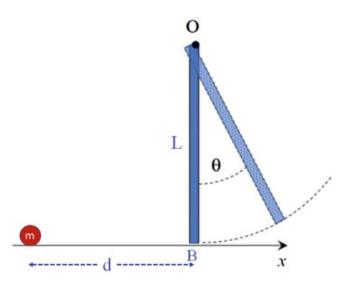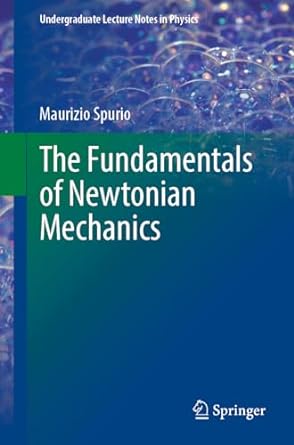As shown in Fig.12.14, an object that can be considered point-like with mass (m=0.50 mathrm{~kg}) is resting
Question:
As shown in Fig.12.14, an object that can be considered point-like with mass \(m=0.50 \mathrm{~kg}\) is resting on a rough horizontal surface with dynamic friction coefficient \(\mu=0.30\). At the initial time, \(t=0 \mathrm{~s}\), it is observed that the object is located at a distance \(d=30 \mathrm{~cm}\) from the \(B\) end of a rod and is moving toward that point with speed \(4.0 \mathrm{~m} / \mathrm{s}\). The rod is homogeneous, of length \(L\), mass \(M=m\) and negligible transverse dimensions; it is free to rotate around the endpoint \(\mathrm{O}\). The rod has length \(L=2.0 \mathrm{~m}\). Neglect any friction on the axis of rotation of the rod. At a certain instant, the object collides with the rod at point B, and the collision is such that immediately after the collision the two bodies have a kinetic energy equal to \(4 / 5\) of the kinetic energy possessed by the object \(m\) immediately before the collision. Determine:
1. the speed with which the object arrives at point B;
2. the speed of the object after the collision and the angular speed of the rod: discuss which of the two permissible solutions is physically possible.
3. Determine whether the collision between the two bodies is elastic, partially inelastic or completely inelastic.
4. Determine at what maximum angle \(\theta_{\max }\) the rod reaches as a result of the collision.
Fig. 12.14

Step by Step Answer:






